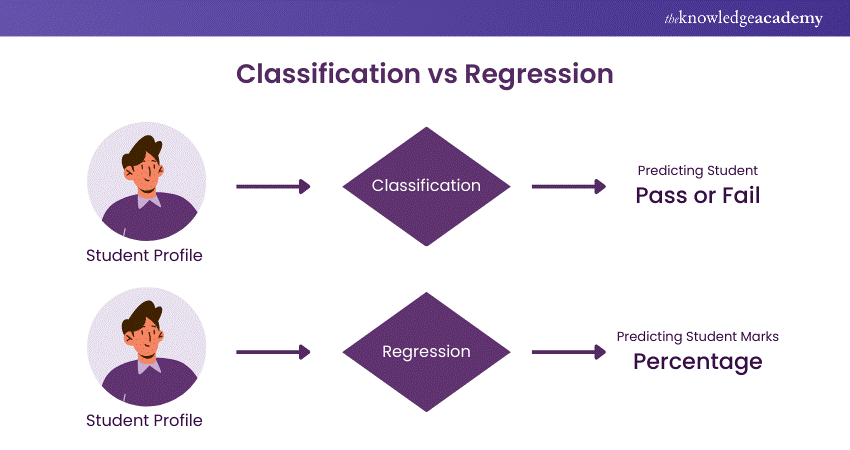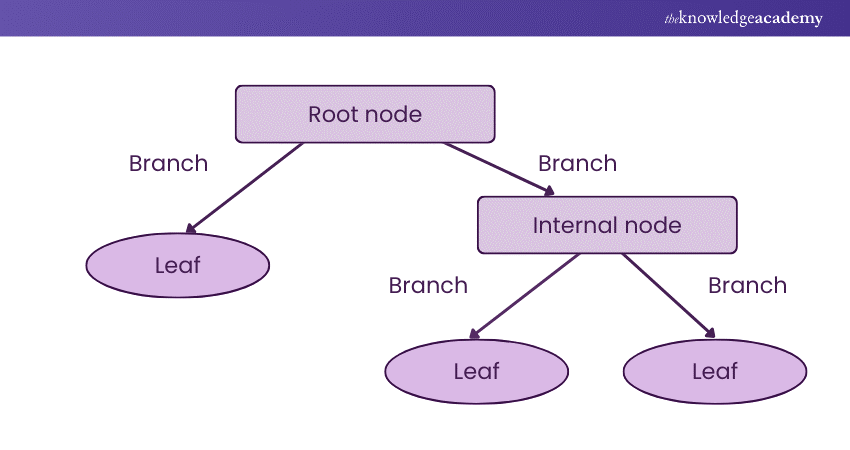We may not have the course you’re looking for. If you enquire or give us a call on +43 720 115337 and speak to our training experts, we may still be able to help with your training requirements.
Training Outcomes Within Your Budget!
We ensure quality, budget-alignment, and timely delivery by our expert instructors.

A Decision Tree offers a visual roadmap that simplifies complex choices in decision-making. Whether analysing data or making business decisions, this tool transforms options into branches, helping you foresee outcomes. With each decision point leading to further possibilities, this blog will walk you through the basics and benefits of using a Decision Tree.
Table of Contents
1) What is a Decision Tree?
2) Different Types of Decision Trees
3) The Structure of a Decision Tree
4) How do Decision Trees Work?
5) Steps to Create a Decision Tree
6) Benefits of Decision Tree
7) Limitations of Decision Trees
8) Examples of Decision Trees
9) Conclusion
What is a Decision Tree?
A Decision Tree breaks down complex decisions into more straightforward, structured choices and their potential outcomes. It operates as a flowchart-like model, where each internal node represents a decision point or test, and the branches lay out the possible outcomes or actions that can be taken. At the end of each branch are leaf nodes, indicating the result of that path.
Decision Trees are extensively used in Decision Analysis, Machine Learning, and Predictive Modelling to assist in classification and regression. Their straightforward, intuitive structure makes them effective in various fields, including data science, finance, healthcare, and business processes, helping organisations navigate decision-making with clarity and precision.
Different Types of Decision Trees
There are two basic types of Decision Trees, each serving different purposes:

1) Classification Trees: Classification trees are used for categorical outcomes—like whether a customer will buy a product (yes or no). These trees help classify objects or cases into predefined categories. This method is valuable for identifying patterns, such as customer behaviour or predicting whether a patient has a particular disease based on symptoms.
2) Regression Trees: Regression trees are used when the outcome is a continuous variable, such as predicting sales, prices, or any measurable value. These trees break down the data into smaller segments based on the decision points that most affect the outcome. They help forecast and predict trends, providing numerical outcomes for different decisions.
The Structure of a Decision Tree
A Decision Tree consists of three basic components:

1) Root Node: This is where the decision-making process begins, representing the entire dataset.
2) Internal Nodes: Represent the various decision points or tests that lead to possible outcomes.
3) Leaf Nodes: These indicate the outcomes or classifications.
The structure visually breaks down complex decisions into smaller, manageable parts, making it easier to analyse each step.
How do Decision Trees Work?
Decision Trees systematically divide a dataset into smaller subsets based on the most essential features at each decision point. The process begins at the root node, where the algorithm evaluates all available features and selects the one that best splits the data based on a certain criterion, such as Gini impurity or information gain. Each branch stemming from the root node represents one of the possible outcomes of that split.
The algorithm recursively splits the dataset at each internal node, creating new branches until it can no longer divide the data meaningfully. The endpoints, called leaf nodes, represent the final decisions, classifications, or predictions. This method allows the tree to model complex and simple decision-making processes, enabling precise predictions and classifications.
Master data manipulation with our Pandas for Data Analysis Training—sign up now!
Steps to Create a Decision Tree
Creating a Decision Tree involves a structured approach to decision-making. It includes mapping out potential outcomes and assessing their impact. These steps ensure that each decision point aligns with your objectives, leading to precise, actionable results.
1) Begin with Overarching Objectives
Identify the primary goal of your decision-making process. Are you looking to classify data, predict an outcome, or evaluate a strategy? Having a clear objective helps shape the structure of your Decision Tree.
2) Draw Arrows
From the root node, draw arrows representing the possible choices or outcomes at each decision point. These branches lead to further decisions or results.
3) Attach Leaf Nodes at the Branch End
Each branch ends with a leaf node that indicates the outcome or conclusion of that particular decision path. It could be a yes/no result, a predicted category, or a numerical value.
4) Determine Each Decision Point’s Success
Evaluate the success of each decision point by comparing it to the overarching objective. Consider the data’s accuracy, consistency, and relevance to ensure the tree leads to practical results.
5) Evaluate Risk vs Reward
At each decision point, analyse the risk versus reward. Some decisions may lead to higher rewards but involve more risk, while others are safer with lower potential outcomes. Consider these factors before finalising your Decision Tree.
Benefits of Decision Trees
Decision Trees provide a lot of benefits in decision-making. Here are some of them:
a) Simplicity: Decision Trees are easy to understand and interpret, making them accessible to technical and non-technical users.
b) Versatility: They can handle categorical and numerical data, making them applicable in various fields such as finance, healthcare, and marketing.
c) No Data Normalisation Required: Decision Trees do not require scaling or normalising data, unlike other algorithms.
d) Clear Visualisation: The tree-like structure represents possible outcomes and the paths leading to them.
e) Non-linear Relationships: Decision Trees can model non-linear relationships, giving them flexibility in handling real-world data scenarios.
Predict the future with confidence—join our Predictive Analytics Course today!
Limitations of Decision Trees
While Decision Trees offer clear and intuitive decision-making, they also have limitations that can impact their effectiveness. These limitations include:
a) Overfitting: Decision Trees tend to overfit, especially with noisy data, leading to less accurate predictions.
b) Bias in Data Splitting: If the data is imbalanced, the tree might create biased splits, favouring outcomes with more frequent instances.
c) Complexity: Large Decision Trees can become overly complex and difficult to interpret, requiring techniques like pruning to simplify.
d) Instability: Small changes in the data can hugely affect the tree's structure, leading to different outcomes with slight variations in input.
Examples of Decision Trees
Here are some of the real-world examples of Decision Trees:
a) Loan Approval: A Decision Tree can be used to evaluate whether a loan should be approved or rejected based on factors such as credit score, income, and employment status.
b) Medical Diagnosis: In healthcare, Decision Trees help doctors assess symptoms and make a diagnosis by examining factors such as patient history, age, and test results.
c) Customer Segmentation: Businesses use Decision Trees to classify customers into segments based on buying behaviour, demographics, and preferences, helping them tailor marketing strategies.
d) Fraud Detection: Decision Trees can detect fraudulent transactions by analysing patterns and flagging unusual activities based on predefined criteria.
Conclusion
A Decision Tree is a powerful and versatile tool in decision-making, Data Analysis, and problem-solving. It's simple structure and ability to handle categorical and continuous data make it widely applicable across industries. While it has limitations, when used correctly, a Decision Tree can provide clarity and insights into complex decisions, paving the way for more intelligent choices and better outcomes.
Advance your career with our Advanced Data Science Certification—join now!
Frequently Asked Questions

Decision Trees are mainly used in Classification and Regression tasks within Machine Learning, decision-making processes, and Data Analysis. Industries like finance, healthcare, and marketing use them for loan approval, medical diagnosis, and customer segmentation.

Pruning, which involves trimming branches that add little predictive power, can prevent overfitting in Decision Trees. Cross-validation and setting minimum samples to split nodes can also help avoid overfitting.

The Knowledge Academy takes global learning to new heights, offering over 30,000 online courses across 490+ locations in 220 countries. This expansive reach ensures accessibility and convenience for learners worldwide.
Alongside our diverse Online Course Catalogue, encompassing 19 major categories, we go the extra mile by providing a plethora of free educational Online Resources like News updates, Blogs, videos, webinars, and interview questions. Tailoring learning experiences further, professionals can maximise value with customisable Course Bundles of TKA.

The Knowledge Academy’s Knowledge Pass, a prepaid voucher, adds another layer of flexibility, allowing course bookings over a 12-month period. Join us on a journey where education knows no bounds.

The Knowledge Academy offers various Data Science Courses, including the Decision Tree Modeling Using R Training, Python Data Science Course and Advanced Data Science Certification Course. These courses cater to different skill levels, providing comprehensive insights into Clustering in Data Mining.
Our Data, Analytics & AI Blogs cover a range of topics related to Data Science, offering valuable resources, best practices, and industry insights. Whether you are a beginner or looking to advance your Data Analytics Skills, The Knowledge Academy's diverse courses and informative blogs have got you covered.
Upcoming Data, Analytics & AI Resources Batches & Dates
Date
 Decision Tree Modeling Using R Training
Decision Tree Modeling Using R Training
Fri 28th Feb 2025
Fri 4th Apr 2025
Fri 27th Jun 2025
Fri 29th Aug 2025
Fri 24th Oct 2025
Fri 5th Dec 2025







 Top Rated Course
Top Rated Course



 If you wish to make any changes to your course, please
If you wish to make any changes to your course, please


